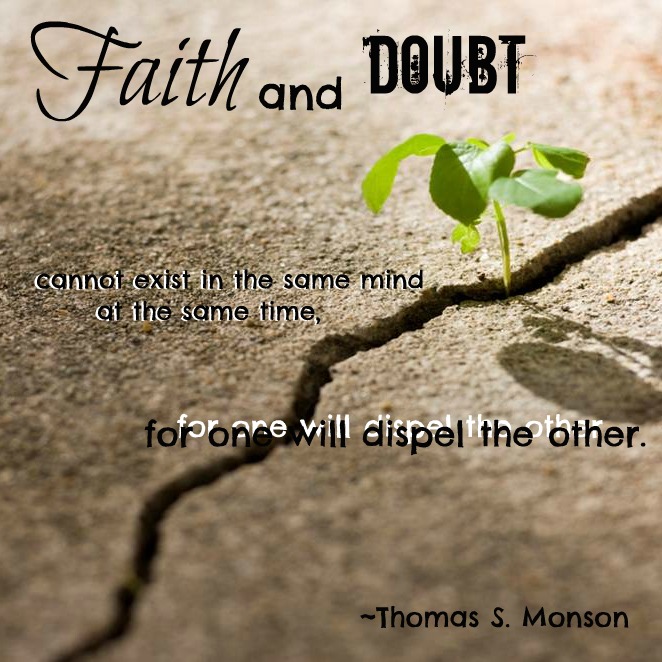By Rachael C. McKinnon
Most Christians are aware that the concept of grace and works are beautifully detailed in the writings of the Apostle Paul in the New Testament. What is not as widely known is how much the Book of Mormon adds to these descriptions. Within those pages is a wealth of knowledge and steps to salvation that further illuminate what Paul was trying to teach.
 Members of The Church of Jesus Christ of Latter-day Saints fervently believe in salvation through grace and works. The Book of Mormon states, “For we labor diligently to write, to persuade our children, and also our brethren, to believe in Christ, and to be reconciled to God; for we know that it is by grace that we are saved, after all we can do” (2 Nephi 25:23, emphasis added).
Members of The Church of Jesus Christ of Latter-day Saints fervently believe in salvation through grace and works. The Book of Mormon states, “For we labor diligently to write, to persuade our children, and also our brethren, to believe in Christ, and to be reconciled to God; for we know that it is by grace that we are saved, after all we can do” (2 Nephi 25:23, emphasis added).
The main idea of the term, “grace,” is divine means of help or strength, given through the love of the Lord Jesus Christ (Bible Dictionary, Grace). This assistance is available to all those who desire to pattern themselves after the Savior. It is not a substitute for our own effort or conscientious obedience; rather it is an enabling power that allows us to continue to strive towards becoming like Him.
Traditional Christianity believes that everyone is saved by grace. Latter-day Saints believe whole-heartedly in this same principle. But we believe it goes much further than that. The Book of Mormon teaches us that grace is more than just being saved, it is also firmly connected with helping us become like the Savior (Moroni 7:48). Grace helps us change ourselves, to be made better than we were before. With this bestowed power and guidance, we are enabled to push forward and work towards “all we can do.”
An LDS scholar has illustrated the use of grace in the following story,
“Christ’s arrangement with us is similar to a mom providing music lessons for her child. Mom pays the piano teacher… Because Mom pays the debt in full, she can turn to her child and ask for something. What is it? Practice! Does the child’s practice pay the piano teacher? No. Does the child’s practice repay Mom for paying the piano teacher? No. Practicing is how the child shows appreciation for Mom’s incredible gift. It is how he takes advantage of the amazing opportunity Mom is giving him to live his life at a higher level. Mom’s joy is found not in getting repaid but in seeing her gift used – seeing her child improve. And so she continues to call for practice, practice, practice.
If the child sees Mom’s requirement of practice as being too overbearing… perhaps it is because he doesn’t yet see with mom’s eyes. He doesn’t see how much better his life could be if he would choose to live on a higher plane.
In the same way, because Jesus has paid justice, He can now turn to us and say, “Follow me” (Matt 4:19), “Keep my commandments” (John 14:15). If we see His requirements as being way too much to ask… maybe it is because we do not yet see through Christ’s eyes. We have not yet comprehended what He is trying to make of us” (Brad Wilcox, His Grace Is Sufficient, 2011).
 Striving to keep the commandments and work towards perfection (spiritual wholeness) can be a challenge. Repeated failure often leads to discouragement. And discouragement can cause an individual to feel unworthy, weak, and undeserving of the blessings that come through obedience. But LDS church members are taught through the Book of Mormon that practice to become like Jesus Christ – as mentioned above – is specifically designed to help us recognize our short-comings so that we can use His grace to become stronger. The Book of Mormon states,
Striving to keep the commandments and work towards perfection (spiritual wholeness) can be a challenge. Repeated failure often leads to discouragement. And discouragement can cause an individual to feel unworthy, weak, and undeserving of the blessings that come through obedience. But LDS church members are taught through the Book of Mormon that practice to become like Jesus Christ – as mentioned above – is specifically designed to help us recognize our short-comings so that we can use His grace to become stronger. The Book of Mormon states,
“And if men come unto me, I will show unto them their weakness. I give unto men weakness that they may be humble; and my grace is sufficient for all men that humble themselves before me; for if they humble themselves before me, and have faith in me, then will I make weak things become strong unto them” (Ether 12:27).
Jacob, another prophet in the Book of Mormon, follows up on this same concept and says, “Nevertheless, the Lord God showeth us our weakness that we may know that it is by his grace, and his great condescension unto the children of men, that we have power to do these things” (Jacob 4:7).
The process of practice in becoming like our Savior naturally highlights where we are struggling. Just like the pianist. We will immediately see where we are lacking. But Wilcox goes on to say,
“When a young pianist hits a wrong note, we don’t say he is not worthy to keep practicing. We don’t expect him to be flawless. We just expect him to keep trying. Perfection may be his ultimate goal, but for now we can be content with progress in the right direction. Why is this perspective so easy to see in the context of learning piano but so hard to see in the context of learning heaven?”
Thankfully, members of the LDS faith know that works and grace are necessarily intertwined. The force of grace does not come to our rescue after “all we can do.” Instead, it’s “our constant energy source. It is not the light at the end of the tunnel but the light that moves us through the tunnel. Grace is not achieved somewhere down the road. It is received right here and right now. It is not a finishing touch; it is the Finisher’s touch” (Wilcox, emphasis added).
Elder Bruce C. Hafen has written, “The Savior’s gift of grace to us is not necessarily limited in time to ‘after’ all we can do. We may receive his grace before, during and after the time when we expend our efforts” (The Broken Heart, 1989).
I am imperfect and flawed. There is much to improve on before my own personal finish line. So I am grateful for grace, overwhelmed by its concept, and speechless at its deliverance. By grace through the Lord Jesus Christ, I can go home to my Father in Heaven. And because of the nature of grace, I will feel at home when I get there.
 Rachael Carver McKinnon holds a BA in Humanities and an MBA from Brigham Young University. She currently lives in Draper, Utah with her husband, Greg. When she isn’t keeping up with one of her four children, she loves road biking and lap swimming.
Rachael Carver McKinnon holds a BA in Humanities and an MBA from Brigham Young University. She currently lives in Draper, Utah with her husband, Greg. When she isn’t keeping up with one of her four children, she loves road biking and lap swimming.
Additional Resources:





Recent Comments